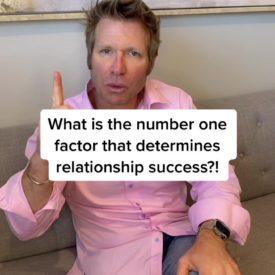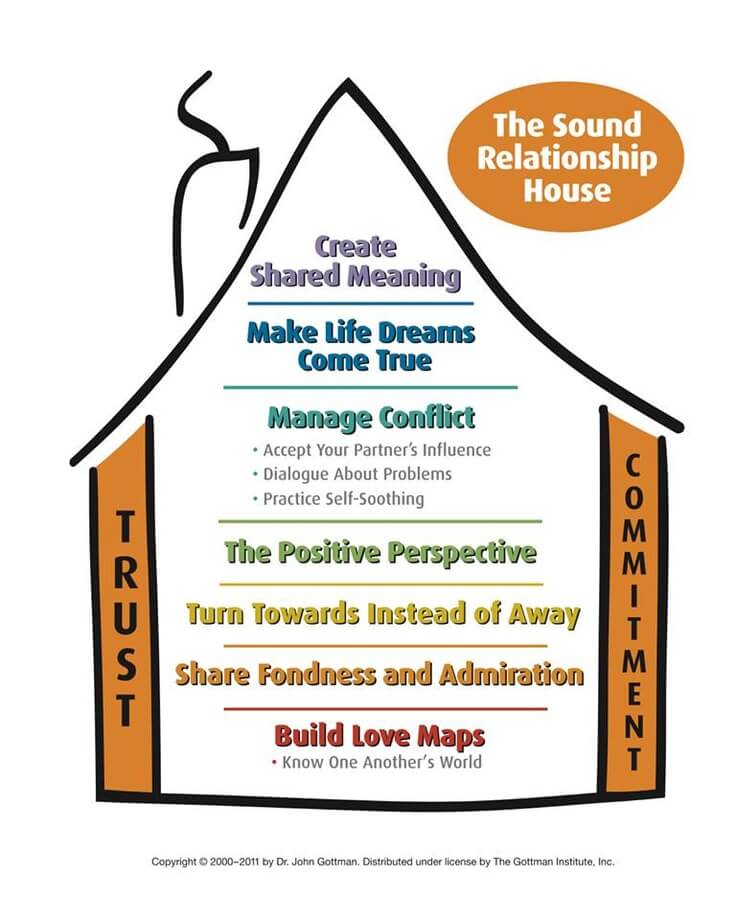- HOME
- PSYCH SERVICES
- BUSINESS & PERFORMANCE PSYCHOLOGY
- CLINICAL, COUPLES, & FAMILIES
- ADHD Treatment & Evaluation Services
- Anger Management
- Anxiety Treatment & Evaluation Services
- Borderline Personality Treatment Services
- Cognitive Behavioral Therapy (CBT) Self-Help
- Couples Counseling and Marital Therapy
- Consent for Psychological Services for Minors Post-Divorce
- Depression Treatment Services
- Infidelity Recovery
- Jacksonville Counseling and Psychology
- Military Psychology & Tricare
- Narcissistic Personality Treatment Services
- Online Counseling
- Psychoeducational Testing
- Psychological Testing and Assessment
- Psychotherapy & Counseling
- FORENSIC PSYCHOLOGY & EXPERT TESTIMONY
- LIFE COACHING & EXECUTIVE COACHING
- PSYCHOLOGICAL PUBLIC DISABILITY QUESTIONNAIRES (DBQ)
- ONLINE COURSES
- Our Partnership Begins When You Purchase an Online Course
- Get to Know Dr. D’Arienzo, Relationship Expert
- Florida Premarital Preparation Online Course
- Georgia Premarital Education Online Course
- TwogetherinTexas Premarital Online Course
- Tennessee Premarital Preparation Online Course
- Minnesota Premarital Education Course Online
- Oklahoma Premarital Counseling Online Course
- South Carolina Premarital Preparation Course
- West Virginia Premarital Education Course
- Online Marriage and Relationship Tune Up Course
- Florida DCF Certified Parent Education and Family Stabilization Online Course
- Georgia Qualified Parent Education and Family Stabilization Online Course
- Texas Qualified Parent Education and Family Stabilization Online Course
- High Conflict Co-Parenting Online Certificate Course (8 Hours)
- Online Anger Management Four Hour Course (Level 1)
- Online Anger Management Eight Hour Course (Level 2)
- Sexual Harassment Online Training
- MMPI/GUARD/LEO
- CPI Police and Public Safety Assessment
- G License Psychological Testing
- Online Psychological Testing for Armed Security Guards and Personal Protection Officers
- MMPI Texas Level III CSO and IV PPO Psychological (ONLINE)
- Requirement for Texas Security License Applicants: MMPI Evaluation
- Level 3 Security Guard New Mexico Online MMPI Psychological Evaluation
- TEAM
- SOCIAL MEDIA/BOOKS
- APPT REQUEST
Georgia Premarital Education Program Online Video Course Developed by Board Certified Psychologist and Relationship Expert
Our Course is LGBTQ+ Affirmative
Dr. Justin D'Arienzo, Psy.D., ABPP, Board Certified, Clinical Psychologist

- Qualified Premarital Counseling Course for Georgia Residents
- Completely Online Georgia Premarital Education Program Course
- Notarized and Official Certificate Included
- Now in Full Video
- Cut the Cost of Your Georgia Marriage License in Half (Get At least a 50% Discount on GA Marriage License). License is Free in Certain Counties with Course (see bottom of page about your county)
Have questions? Please click here to visit our FAQ page!
Welcome to the Official $20.00 Georgia Premarital Education Program Online Course (Save 50% on your GA Marriage License!), where Georgia comes for online premarital counseling to prepare for their marriages and to save money. Did you know in the state of Georgia, its citizens can participate in a six hour premarital counseling course provided by a Georgia licensed mental health provider or an active member of the clergy. I am licensed clinical psychologist in Florida, but not in Georgia yet; however, I am a certified minister recognized in the state of Georgia to perform premarital counseling that qualifies me to provide you with the Georgia Premarital Education Program and an official notarized certificate that will save you money on your Georgia marriage license. The savings on your marriage license depends upon which county in which you plan to marry. There is a discount in all counties, and in many Georgia counties, having a premarital counseling certificate from us will make your marriage license free. Just bring our certificate to the court house and enjoy the savings.
Georgia Premarital Preparation Course Test Drive
Introduction: Welcome to the Official Georgia Premarital Education Program Course. Our program is completely online. The course has six main sections, and in each section, you may either view the optional video or read the corresponding material. Once you have viewed the optional video and/or read the material, each section has an exercise that needs to be completed.

Before getting started, I would like to share a bit about myself, your course leader. My name is Dr. Justin D'Arienzo. I am a Licensed Clinical Psychologist, Certified Florida Supreme Court Family Mediator, Parenting Coordinator, Custody Evaluator, and Relationship Expert. I am renowned for my relationship interventions in northeast Florida. A large amount of my clinical experience is providing premarital therapy, marital therapy, and family therapy. A wide range of my forensic experience involves the darker issues associated with relationships, like divorce therapy, high conflict co-parenting therapy, and custody evaluations for the parents and their children. I deal with the highs and lows of relationships, like the joys of early relationships, struggles in the middle, and the destructive aftermath of the divorce process due to infidelity, addiction, neglect, and abuse. Having the experience treating all kinds of relationships provides me with an understanding of what a healthy relationship is from the very beginning to the trials and tribulations of those successful and those that are not.
Not only do I offer this course in the state of Georgia, but I offer a series of online premarital courses for several other states, including Florida, Tennessee, Texas, and Oklahoma. In these online courses, along with in-person premarital and marital therapy, I educate couples on a wide range of the material offered in this online workbook. My findings suggest that when the material from my courses is applied, couples grow fonder, improve communication skills, and discover new things about themselves and each other. Similarly to my findings, the scientific literature indicates that those taking a premarital course are more likely to have a successful marriage.
Marriage can be a demanding but very rewarding experience and requires couples to have the necessary tools to make it work successfully. Marriage requires that two individuals are willing to supply each other (and their children) with 100 percent of themselves especially during the hard times when it is easier to avoid issues. Marriage takes an abundance of commitment, trust, and hard work. Your willingness to take this premarital course indicates that you care more about making your marriage a success.
Back to the Georgia Premarital Course, this online workbook can either be completed alone to understand more about yourself and your relationship needs, or it can be completed as a couple. Although it was designed for couples, again it can be completed by just one of you. After you finish reviewing the material for each section, you will complete the exercises together. Let's get started with Section 1 after we review the course outline.
Sections of Online Georgia Premarital Preparation Course (Georgia Premarital Education Program):
Section 1: Structure of a Healthy Relationship (Deepening Intimacy, Friendship, and Love)
Section 2: Emotional Needs for a Healthy and Happy Relationship Affair Proof Relationship
Section 3: Personality Test. How Do Your Personalities Work Together?
Section 4: Money and Marriage
Section 5: Communication and Conflict Resolution
Section 6: Quiz and Questionnaire to Receive Certificate
Georgia Premarital Education Program Section 1: Structure of a Healthy Relationship (Building Intimacy and Deeper Love)
What is a Healthy Relationship? "The Sound Relationship House" – Developed by Dr. John Gottman and Dr. Julie Schwartz Gottman
Being equipped with the ability to build and maintain a sound relationship house is the ultimate goal. If you are wondering what a sound relationship house is, you have come to the right place. A sound relationship house is not a perfect structure but is rather a functional one. Living in a sound relationship house comprises being able to withstand and experience rainy days to sunny days. Overall, the house is equipped to keep you safe, is fully functioning, and is a place for couples and family members to flourish and cope with challenges. I have truncated the Gottmans' seven components of a Sound Relationship House to four major components for ease of learning. These components include:
- Friendship
- Positive Lens
- Conflict Management Skills
- Joint and Individual Hopes, Dreams, and Shared Meaning

Friendship
Friendship is based on the idea that we should truly know our partner just like two best friends would know one another. The Gottman's coined the extent to which we know our partner as the love map. Every single one of us possesses a love map. Knowing our partner means knowing their love map. Knowing our partner means understanding their likes and dislikes, knowing their background and their life goals, and knowing how they might react to a given situation. Understanding your partner is also about knowing their hobbies and interests, such as their favorite television shows, foods, or books. In this course, we will also take advantage of other tools that allow us to gain a better understanding of our partners. These include a personality test, such as the Myers-Briggs, which will allow each partner to gain insight and perspective on how their partner perceives the world.
You might be wondering how else you can work to build a love map with your partner. The first step to gaining a deeper understanding of your partner is to know and understand your partner as described in the above paragraph. You need to take extra steps to challenge yourself and ask if you are fully admiring your partner and expressing your gratitude for them. Do you do simple gestures like turning towards them when talking? Do you talk to them? Do you spend time together? Do you express a keen interest in their understanding and perspective on specific situations? Do you share similar values and beliefs with your partner, and do you treat them as if they are your best friend? If you can answer yes to these questions without hesitation, then you are on a very solid footing to continue building a strong love map with one another.

A Positive Lens
Just as a positive mindset on life can improve an individual's reactions to life, so can having an overall positive perspective. Research findings suggest that those who possess a positive perspective toward their spouse experienced a tremendous difference in the quality and satisfaction within their relationship. When one has a positive perspective toward their partner, they are a lot more likely to give their partner the benefit of the doubt and be more likely to attribute their partner's mistake to something caused by the environment. Likewise, when their spouse does something positive for them, they let this behavior serve as a confirmation that their spouse is an overall great partner. On the other hand, if couples are constantly amid emotional turmoil, frustration, anger, resentment, and personal attacks, then they are more likely to develop a pessimistic outlook on the state of the relationship and the other. A pessimistic outlook on a relationship can only send it into a downward spiral. When someone develops a pessimistic outlook and one spouse acts inappropriately, the spouse with the pessimistic outlook will view this as confirmation that their partner is not right for them.

Managing Conflict
When couples gain the ability to manage their emotions and understand how their spouse responds to different situations, they have a better functioning relationship. When one can manage their own emotions and gain an understanding of the emotions of others, they are demonstrating Emotional Intelligence. The Gottman's found that couples that work together, rather than against each other, come to a resolution during times of conflict and do significantly better than couples that do not work together to manage conflict. The Gottman's have identified four dangerous behaviors that are unveiled during times of high conflict that either sustain conflict or lead to a greater amount of conflict among couples. I will illustrate these behaviors below. They are referred to as the Four Horsemen, and I will provide antidotes for each category below as well.
Criticism
The first of the four dangerous horsemen. According to John Gottman, many relationships deal with criticism to a certain extent. For the sake of the relationship, it is essential that couples work together to keep the level of criticism that they give to their partner at a minimum. When a relationship is in the midst of high amounts of conflict or negativity, most feedback is perceived as negative. Even statements of constructive criticism are perceived as negative. Research findings suggest that for every time that one criticism is given, five positive statements are needed to counteract the negative impact of one negative statement. This can create more of an ordeal when a relationship is already in a negative state because it can make it even more challenging to give your partner positive affirmations and especially five of them.
Antidotes to Criticism: The main goal is to find ways around being critical with your partner. As stated above, positive framing or verbal positive reinforcement from you toward your partner when they do something that you like is essential instead of criticizing that they did not do something right. Wait for them to get it right and then praise them.
Defensiveness
The second of the four horsemen is a significant problem within relationships. In my vast experience in couples therapy, defensiveness is one of the most frequent behaviors that I observe. Defensiveness is an instinctive action to something that is perceived as criticism. A spouse gives the other spouse feedback, and this can sometimes be perceived as criticism. The individual that receives the perceived criticism responds by blaming their spouse for doing the same thing and fails to take responsibility and justifies their behavior. This scenario tends to cause the original speaker to feel invalidated and alone due to the defensiveness of their partner. In turn, the couple will start to feel more distant.
Antidotes to Defensiveness: The following are antidotes to defensiveness: (1) Try to remember that your relationship is the two of you working together (not against each other). (2) Instead of viewing your partner's words as criticism or attacks, see them as feeling strongly about the topic at hand. (3) Keep in mind that you both are imperfect. (4) Remember your partner's many positive attributes. (5) Most importantly, be able to swallow your pride and take responsibility for the parts of feedback your partner is expressing to you. Apologize for what you have done and do not apologize for what you have not done. Possessing the ability to accept an ounce of responsibility when due, will ensure that the tension de-escalates, that communication improves, and trust builds between both of you.
Stonewalling
The third of the four horsemen. Stonewalling is as harsh as it sounds. Stonewalling is the tendency to avoid speaking or communication regarding an important matter. The receiving partner tends to feel as if they are speaking to a brick wall. Dr. Gottman found that a majority of men used stonewalling as a means of dealing with conflict. The 85 percent of men that engaged in this tendency did not know that it was detrimental to the state of their relationship. Men tend to emotionally detach themselves amid conflict. It is important to acknowledge that detaching from the emotionality of an argument does not solve it. "Parallel living" is a consequence of this behavior over the longer term. Parallel living can result in a spouse pulling away from their relationship. When a spouse pulls away, that spouse can become vulnerable to outer forces. Stonewalling reaps no benefits for the couple and can lead to a dramatic increase in conflict and meltdowns, especially when the non-stonewaller starts to chase the stonewaller about a specific issue. After conflict mounts beneath the surface, the stonewaller eventually explodes and reacts with rage which often leads to a regrettable incident.
Antidotes to Stonewalling: Remember that it is not healthy to withdraw from your partner emotionally. Look for the positive in your partner. Make time for positive interactions. Never ignore your partner, even if it is a nod or a small gesture to show that you are listening. It is also important to practice good self-care to avoid stonewalling. The tendency to stonewall stems from anxiety about a conflict. Conflict causes many of us feelings of anxiousness. It is important to remember that practicing good self-care is imperative to avoid the anxiety of dealing with difficult issues. Good self-care can be getting a good night's sleep, exercising frequently and keeping a healthy diet.
Contempt
This is identified as the fourth of the four horsemen (belligerence is a term used by Gottman to describe a stronger form of contempt. Belligerence is also known as the relative to the four horsemen). Research findings suggest that contempt can be detrimental to the state of a relationship and is the predictor for 86 percent of divorce cases. "Contempt" is described as a behavior that makes one partner feel demeaned or "put down". For example, this can take form as judgment, disdain, eye-rolling, snarking, imitating or mocking, insulting, and cynicism. Several warning signs can help you identify if contempt is manifesting in your relationship: You no longer have feelings of admiration and appreciation for your partner. It is hard for you to remember what you deem positive about your partner. You start to feel as if your partner is significantly lacking important qualities. Contempt can be as simple as expressing disgust with your partner in the small things they do like chewing their gum, eating, snoring, or cleaning.
Antidotes for Contempt: Focus on your partner's redeeming qualities and what you love about them. When things start to become heated use "time out". Be wary of your body language and tone. Focus on the behavior of your spouse that you do not like, and not them as a person. It is important to gain an understanding and a sense of empathy for where your partner is coming from. We gain a greater appreciation for the causes of our partner's behavior when we make an effort to put it into context. When one starts to gain an understanding of these underlying causes, You start to see that your partner's behavior is more about your partner and less about you.

Additional Tools to Resolve Conflict
Allowing Joint Influence: To be a successful couple both partners have to allow the "influence" of the other. The typical structure of a relationship consists of a top and bottom, and the top of the relationship usually possesses the ultimate power. Relationships have higher success rates when each party has equal veto power with most of the conflict within a relationship. Dr. Gottman's findings suggest that in the most effective, happiest of marriages, both partners accepted and acknowledged the "influence" of their partners. Examples of allowing influence are learning a new belief from your partner or acknowledging their opinions and believing that your partner can come up with good solutions without you.
Resolutions Before the Argument is Over: Partners that work together to make the appropriate repairs turn out to have the happiest and most functional relationships. A functional relationship makes a significant effort to come to a resolution with their partner during the argument. The goal of functional couples is not to be fighting against each other, but to work together so that problems can be resolved and not resurfaced and exacerbated during the next conflict.
Apologize: Both partners must be equipped with the ability to express when they are sorry. Possessing the ability to take responsibility and admit your wrongs is effective in reducing conflict and promoting a loving relationship.
Using Humor and Affection: Fostering a healthy environment where negativity is occurring can be very helpful. It can be as simple as offering humor to your partner when they are frustrated or offering their partner a cup of their favorite tea. Asking their partner for a hug can help make light of a previous argument and allow the couple to move on from it. Make-up intimacy is also effective in making peace and facilitating the partners to reconnect. It is significant to have a sense that your partner will accept your sweet gestures to improve the situation.
Ensuring Security and Safety: Another key to relationship success is building a foundation of trust and commitment and ensuring safety. When you know that your partner will give way and will not be obstinate during a conflict ensures safety in a relationship.
Compromising: "Black and white thinking" is problematic. For example, "I am right so you are wrong" is a dangerous way to think. Couples have to learn to give and take in an argument and share power.
Argue with the End in Mind: Couples need to confront conflict with an end goal in mind. The end goal should be to resolve the conflict and ensure the other partner feels satisfied with how the conflict ended and feels safe. Stubbornness has to be limited in a relationship.
Avoid Fight or Flight (Flooding): There are a variety of calming techniques that couples should utilize, meaning they should be mindful of their heart rates. When we get a heart rate at least 90 to 95 beats per minute, we are overflowing emotionally and are not good at being rational. With a heart rate above 90 or 95 beats per minute, we are constantly in a state of fight, flight, or freeze. When we realize that we are experiencing an overflow of emotions, a 20-30 time out is necessary. Once calmer after a short break, resume the discussion so the conflict can be resolved. In the same way that we should not spank our children during emotionally taxing times. We should not speak to our partner about matters we feel passionate about when we are angry, or we will inevitably engage in behavior that we regret. Most importantly, if you feel like you need a break from conflict, take a break; however, you must try to resolve the issue at hand immediately after your break.
Keep an eye out for flooding or feeling overwhelmed, like feeling the inability to keep calm during the conflict, longing for distance, and having small issues turn into bigger issues.
Markman and Stanley Technique
I have demonstrated, safe and effective talking techniques that have been adapted by Markman and Stanley in "Fighting for your Marriage." The techniques enable each partner to speak and feel heard.
- Use an item that is valued by both of you as a talking tool (for example, a family photo or a wedding ring).
- Each person waits their turn to hold the item and the person that has the item in their hand also has the floor to speak.
- The person that is listening has to repeat back their understanding of what their partner said and verify that it is correct.
- The other person then takes the talking object and talks while their partner summarizes.
Gottman Five-Step Tool
Dr. Gottman has invented a five-step tool that helps any couple discuss an area of concern within their relationship that needs to be resolved. Keep in mind that the ultimate goal is to gain a deep understanding of where your partner is coming from rather than to win the argument and always be "right". In my experience of working with couples, I want each one of them to feel that they have been listened to, empathized with, and accepted for their position on an issue. When the above is achieved, the couple can finally find a resolution. Highly effective couples find ways to easily agree to disagree. Couples with high conflict relationships are easily threatened by disagreements.
By using the five steps below, couples should work through each step together.
- Feelings: Explain to them how you were feeling in the situation. Do not explain why you felt that way. Do not comment on your partner's feelings.
- Realities: Give an account of your "reality" of the situation. Make sure to take turns. When you both are done explaining, summarize and affirm your partner's feelings. During times of conflict, we tend to have selective attention and remember the same situation in two different ways.
- Triggers: Elaborate on the experiences from your past that might have increased the intensity of the situation and the stories of why these are triggers for you. Own what you consider your triggers. Do not blame, criticize or minimize your partner's triggers.
- Responsibility: Recognize the role you played in contributing to the conflict. Responsibility is the opposite of defensiveness. When we acquire the ability to take responsibility, this can tremendously deescalate a conflict.
- Constructive Plans: Be proactive and plan a way that each of you can make it better next time. Now that you possess more empathy for your partner's take on an issue, and you have been heard, and each of you can take a little bit of responsibility for the outburst, you are better equipped to come to a resolution with your partner.

Shared Meaning
Providing support for each other's goals and aspirations and having a deeper understanding of that meaning leads us to the last chapter of the Sound Relationship House. When we have achieved friendship with our partner, view our partner optimistically, and gain conflict resolution skills, then we are prepared for this last section. This last section emphasizes the importance of acquiring shared rituals, goals, roles, and symbols with one another.
Rituals
Exploring shared rituals is essential. Rituals are activities that have the means to bond us together, provide us a sense of security, and provide us with an activity that we look forward to partaking in. Try to ask yourself what kind of rituals you can see yourself creating with your partner. You might already partake in specific rituals with your family that you can think of. Do you eat dinner together after a long day, are there specific holiday traditions that you all value, or are there certain values that you share regarding issues like education or where and how you will live?
Goals
Rituals and goals are equally important within a successful relationship. A functional and effective relationship supports both partners in achieving their individual life goals and their joint goals. Challenge yourself and your partner. Ask you and your partner these questions. Am I honoring my partner's goals, do we have similar financial goals, do we have life dreams that could work effectively together, do we value each other's accomplishments?
Roles
In a successful relationship, each person has a role or roles that the other partner supports. Make sure to challenge yourself and ask yourself the following. Do you support each other's role within the family, and does one of you have an expectation that you hold a role that is not shared by the other spouse? Think about how often this might impact the dynamics of your relationship.
Symbols
In an effective relationship, one is aware and understands their partner's symbols within their daily life. It is not imperative to have the same understanding of these symbols, but we must appreciate the symbols meaning for our partners. We should honor our partner's meaning and reality of these symbols. The following are some key symbols:
- The home
- Money
- The meaning of family
- The role of sex
- Fun and play
- Trust
- Personal freedom
- Autonomy
- Sharing power
- Adventure

GEORGIA PREMARITAL EDUCATION PROGRAM EXERCISE 1
Spend 30 minutes as a couple and complete the following exercises.
- Share something with your partner that they don't know about you.
- Each of you shares something that you admire or find amazing about the other.
- Commit to each other that for today you will practice moving toward each other and be open to the other's expressions of affection and desire to communicate.
- Explore together how the balance of power may be improved in the relationship. Do you both share equal power related to spending, children, plans, and domestic responsibilities?
- Use one of the techniques above to discuss an issue that has created conflict (Gottman or Markman and Stanley).
- Together discuss a personal goal that you would like the other to help you accomplish, create a new ritual that will define you as a couple, and discuss personal values that you each have that you would like to follow as a couple.

Free Bonus - Dr. D'Arienzo's ebook

Get Dr. D'Arienzo's Love Fest 30-Day Relationship Challenge: 30 Simple Psychological Science Based Activities for Improving Your Partnership. This e-book is valued at $4.99 and is included FREE with your course purchase. As seen on Amazon, this e-book welcomes you to Dr. D'Arienzo's Love Fest 30-Day Relationship Challenge! Get ready to embark on a transformative journey that will strengthen your bond and bring you closer as a couple.
From the author of:
Over the next 30 days, he will provide you with daily activities rooted in psychological science to improve your relationship. By participating in this challenge and being bold in your commitment, you will witness positive changes and experience the joy of deepening your connection. Each day, a new activity will be presented. Get ready to take your relationship to new heights and create lasting memories together. Let the Love Fest begin!
Testimonials
 Clint
Clint"Thanks Dr. D'Arienzo. I did not know that I have both passive and aggressive tendencies. I'm fixing both because of this course. My wife said she can see a difference of taking this course."
 Amanda
Amanda"Great course!. I learned that anger was learned through my childhood and watching others, and not being able to separate the emotions that triggers anger. .Now I have the answers to change my life"
 George
George"Easy to understand, got my certificate quickly for my court case. Judge approved of it."
 Christie M.
Christie M."Thank goodness a premarital course like this is offered. The exercises were practical. I used the friendship ones with my best friend too."
Google Reviews
Premarital Course Reviews
Submit your review | |
Georgia Premarital Course
Average rating: 13 reviews
Jason
Feb 3, 2022
Thank you!
Although I was a little skeptical at first I couldn’t believe all the information that was given in video form. It was very professional and fun. Seriously, my fiancé and I are closer because of it!
Mark Ryan
Jan 23, 2022
Loved It!
I got so much out of your Georgia premarital course and so did my fiancé thank you very much!
Melissa Miller
Aug 9, 2021
Great insight
The courses gave us great insight on each other’s wants and needs.
Courtney Phillips
Aug 5, 2021
My fiancé and I really enjoyed this course!
My fiancé and I really enjoyed this course! All of the exercises were explained very clearly and we enjoyed all of them. There weren’t any parts that either of us though were boring. It really helped us get a better understanding of each other, and how to communicate effectively as we enter into marriage together.
Ruby Williams
Jun 12, 2021
We loved it
Me and my fiancé took the premarital course and I must say we loved it . It helped us work on our communication skills and get to learn one another all over again.. it also help us become one as in a whole i would truly recommend anyone to take this course
Shari Bender
Mar 12, 2021
We highly recommend this online premarital course!
We highly recommend this online premarital course! We looked into it to save money on our marriage license, and learned so much about ourselves and each other. We are in our 50's and a 2nd marriage for both. Was relevant for our situation as well as young couples!
Kathy Robinson
Jan 24, 2021
Fabulous course!!!
Fabulous course!!! We took our time through this course, we learned so much about each other and definitely prepared us more for marriage. This course has given us some tools to help when issues arise, which they will. It was great putting together a budget, doing the personality test and of course working through conflict. We have learned ways to communicate with love and respect. This course was an extremely positive experience and advise it for all, premarital and those married but could use some help. Thank you very much for this course!!!
Becka Lane
Aug 11, 2020
Cool Course!
I think we are better communicators after taking this course. Now we have a guide to manage our disagreements. Thanks. Feeling more confident about getting married after taking this course.
John Gershad
Jul 18, 2020
Awesome Course
Notarized certificate came on time and course was informative and fun! Loved the videos!
Josh Williams
Jul 15, 2020
Great Georgia Premarital Course
All video, to the point, and priced right. Thanks for a great course!
Page 1 of 2:
«
‹
1
2
›
»
How It Works
Click on the Click Here to Purchase button above or below to make a secure payment (Paypal or credit card) through Cart66. If you are concerned about online payments, you may call our office directly at (904) 379-8094 to make a payment directly during regular business hours (9-5) Monday through Friday. Both options are secure and quick methods to get started. Please note that payment for any of our online courses is nonrefundable unless you accidentally purchase more than one.
Once payment has been received for the course, you will receive an automatic email with the password and the login page, or you can use the password sent to you and click here: Login to the Georgia Premarital Education Program Course at www.drdarienzo.com. If you are having trouble finding your password or accessing the course, please contact our office during our normal business hours of Monday through Friday from 9:00 a.m. to 5:00 p.m. EST (904-379-8094).
After logging in with the password, you will have one year to complete the course. Georgia law requires that you spend a minimum of six (6) hours on the premarital course. The Georgia premarital counseling course is structured to be completed with the exercises, which takes at least 4-6 hours if completed as instructed. Please follow the Georgia statute by spending at least 6 hours on the course. Once you have finished reading through the material and completing the exercises, you will need to take the quiz. Please take your time and fill out the information accurately. After the quiz has been submitted, we will be notified, and we will mail you your notarized Georgia Premarital Program Course Certificate form of completion the next business day. Please allow up to one (1) week to receive your certificate in the mail.
Blog Posts about Marriage & Couses
Benefits of Taking an Online Premarital Preparation Course
Benefits of Taking an Online Premarital Preparation Course Getting married is a big decision, and it's important to be ...
View moreThe Gottman Approach to Couples Therapy
The Gottman Approach to Couples Therapy The Gottman Approach is a research-based approach to couples therapy that has b...
View moreAre you Devoting Enough Time to Your Marriage?
Are you Devoting Enough Time to Your Marriage? Work, childcare, cooking, housework, sleep. Something missing from your ...
View moreDo we need premarital counseling?
Understanding the Need for Online Premarital Counseling: Signals and Benefits As our world evolves with technology, mor...
View morePlanning a Summer Wedding in Georgia?
Your Marriage License Savings Information for Each County after Taking Our Online Georgia Premarital Education Program Course
Appling County
The Appling County Courthouse will discount your marriage license application fee from $67.00 to $27.00 upon completing our online premarital preparation course. The cost of our online premarital preparation course is $20.00, so you will SAVE $20.00 on your marriage license.
Atkinson County
The Atkinson County Courthouse will discount your marriage license application fee from $76.00 to $36.00 upon completing our online premarital preparation course. The cost of our online premarital preparation course is $20.00, so you will SAVE $20.00 on your marriage license.
Bacon County
The Bacon County Courthouse will discount your marriage license application fee from $76.00 to $36.00 upon completing our online premarital preparation course. The cost of our online premarital preparation course is $20.00, so you will SAVE $20.00 on your marriage license
Baker County
The Baker County Courthouse will discount your marriage license application fee from $76.00 to $36.00 upon completing our online premarital preparation course. The cost of our online premarital preparation course is $20.00, so you will SAVE $20.00 on your marriage license.
Baldwin County
The Baldwin County Courthouse will discount your marriage license application fee from $76.00 to $36.00 upon completing our online premarital preparation course. The cost of our online premarital preparation course is $20.00, so you will SAVE $20.00 on your marriage license.
Banks County
The Banks County Courthouse will discount your marriage license application fee from $67.00 to $27.00 upon completing our online premarital preparation course. The cost of our online premarital preparation course is $20.00, so you will SAVE $20.00 on your marriage license.
Barrow County
The Barrow County Courthouse will discount your marriage license application fee from $56.00 to $16.00 upon completing our online premarital preparation course. The cost of our online premarital preparation course is $20.00, so you will SAVE $20.00 on your marriage license.
Bartow County
The Bartow County Courthouse will discount your marriage license application fee from $75.00 to $35.00 upon completing our online premarital preparation course. The cost of our online premarital preparation course is $20.00, so you will SAVE $20.00 on your marriage license.
Ben Hill County
The Ben Hill County Courthouse will discount your marriage license application fee from $56.00 to $16.00 upon completing our online premarital preparation course. The cost of our online premarital preparation course is $20.00, so you will SAVE $20.00 on your marriage license.
Berrien County
The Berrien County Courthouse will discount your marriage license application fee from $76.00 to $36.00 upon completing our online premarital preparation course. The cost of our online premarital preparation course is $20.00, so you will SAVE $20.00 on your marriage license.
Bibb County
The Bibb County Courthouse will discount your marriage license application fee from $77.00 to $37.00 upon completing our online premarital preparation course. The cost of our online premarital preparation course is $20.00, so you will SAVE $20.00 on your marriage license.
Bleckley County
The Beckley County Courthouse will discount your marriage license application fee from $56.00 to $16.00 upon completing our online premarital preparation course. The cost of our online premarital preparation course is $20.00, so you will SAVE $20.00 on your marriage license.
Brantley County
The Brantley County Courthouse will discount your marriage license application fee from $76.00 to $36.00 upon completing our online premarital preparation course. The cost of our online premarital preparation course is $20.00, so you will SAVE $20.00 on your marriage license.
Brooks County
The Brooks County Courthouse will discount your marriage license application fee from $76.00 to $36.00 upon completing our online premarital preparation course. The cost of our online premarital preparation course is $20.00, so you will SAVE $20.00 on your marriage license.
Bryan County
The Bryan County Courthouse will discount your marriage license application fee from $77.00 to $37.00 upon completing our online premarital preparation course. The cost of our online premarital preparation course is $20.00, so you will SAVE $20.00 on your marriage license.
Bulloch County
The Bulloch County Courthouse will discount your marriage license application fee from $76.00 to $36.00 upon completing our online premarital preparation course. The cost of our online premarital preparation course is $20.00, so you will SAVE $20.00 on your marriage license.
Burke County
The Burke County Courthouse will discount your marriage license application fee from $77.00 to $37.00 upon completing our online premarital preparation course. The cost of our online premarital preparation course is $20.00, so you will SAVE $20.00 on your marriage license.
Butts County
The Butts County Courthouse will discount your marriage license application fee from $56.00 to $16.00 upon completing our online premarital preparation course. The cost of our online premarital preparation course is $20.00, so you will SAVE $20.00 on your marriage license.
Calhoun County
The Calhoun County Courthouse will discount your marriage license application fee from $76.00 to $36.00 upon completing our online premarital preparation course. The cost of our online premarital preparation course is $20.00, so you will SAVE $20.00 on your marriage license.
Camden County
The Camden County Courthouse will discount your marriage license application fee from $76.00 to $50.00 upon completing our online premarital preparation course. The cost of our online premarital preparation course is $20.00, so you will SAVE $6.00 on your marriage license.
Candler County
The Candler County Courthouse will discount your marriage license application fee from $76.00 to $36.00 upon completing our online premarital preparation course. The cost of our online premarital preparation course is $20.00, so you will SAVE $20.00 on your marriage license.
Carroll County
The Carroll County Courthouse will discount your marriage license application fee from $76.00 to $36.00 upon completing our online premarital preparation course. The cost of our online premarital preparation course is $20.00, so you will SAVE $20.00 on your marriage license.
Catoosa County
The Carroll County Courthouse will discount your marriage license application fee from $65.00 to $21.00 upon completing our online premarital preparation course. The cost of our online premarital preparation course is $20.00, so you will SAVE $24.00 on your marriage license.
Charlton County
The Charlton County Courthouse will discount your marriage license application fee from $76.00 to $36.00 upon completing our online premarital preparation course. The cost of our online premarital preparation course is $20.00, so you will SAVE $20.00 on your marriage license.
Chatham County
The Chatham County Courthouse will discount your marriage license application fee from $66.00 to $26.00 upon completing our online premarital preparation course. The cost of our online premarital preparation course is $20.00, so you will SAVE $20.00 on your marriage license.
Chattahoochee County
The Chattahoochee County Courthouse will discount your marriage license application fee from $76.00 to $36.00 upon completing our online premarital preparation course. The cost of our online premarital preparation course is $20.00, so you will SAVE $20.00 on your marriage license.
Chattooga County
The Chattooga County Courthouse will discount your marriage license application fee from $66.00 to $26.00 upon completing our online premarital preparation course. The cost of our online premarital preparation course is $20.00, so you will SAVE $20.00 on your marriage license.
Cherokee County
The Cherokee County Courthouse will discount your marriage license application fee from $66.00 to $26.00 upon completing our online premarital preparation course. The cost of our online premarital preparation course is $20.00, so you will SAVE $20.00 on your marriage license.
Clarke County
The Clarke County Courthouse will discount your marriage license application fee from $67.00 to $27.00 upon completing our online premarital preparation course. The cost of our online premarital preparation course is $20.00, so you will SAVE $20.00 on your marriage license.
Clay County
The Clay County Courthouse will discount your marriage license application fee from $76.00 to $36.00 upon completing our online premarital preparation course. The cost of our online premarital preparation course is $20.00, so you will SAVE $20.00 on your marriage license.Clayton County
The Clayton County Courthouse will discount your marriage license application fee from $82.00 to $42.00 upon completing our online premarital preparation course. The cost of our online premarital preparation course is $20.00, so you will SAVE $20.00 on your marriage license.Clinch County
The Clinch County Courthouse will discount your marriage license application fee from $66.00 to $26.00 upon completing our online premarital preparation course. The cost of our online premarital preparation course is $20.00, so you will SAVE $20.00 on your marriage license.
Cobb County
The Cobb County Courthouse will discount your marriage license application fee from $56.00 to $16.00 upon completing our online premarital preparation course. The cost of our online premarital preparation course is $20.00, so you will SAVE $20.00 on your marriage license.
Coffee County
The Coffee County Courthouse will discount your marriage license application fee from $76.00 to $36.00 upon completing our online premarital preparation course. The cost of our online premarital preparation course is $20.00, so you will SAVE $20.00 on your marriage license.
Colquitt County
The Colquitt County Courthouse will discount your marriage license application fee from $77.00 to $37.00 upon completing our online premarital preparation course. The cost of our online premarital preparation course is $20.00, so you will SAVE $20.00 on your marriage license.
Columbia County
The Columbia County Courthouse will discount your marriage license application fee from $56.00 to $16.00 upon completing our online premarital preparation course. The cost of our online premarital preparation course is $20.00, so you will SAVE $20.00 on your marriage license.
Cook County
The Cook County Courthouse will discount your marriage license application fee from $56.00 to $16.00 upon completing our online premarital preparation course. The cost of our online premarital preparation course is $20.00, so you will SAVE $20.00 on your marriage license.
Coweta County
The Coweta County Courthouse will discount your marriage license application fee from $56.00 to $16.00 upon completing our online premarital preparation course. The cost of our online premarital preparation course is $20.00, so you will SAVE $20.00 on your marriage license.
Crawford County
The Crawford County Courthouse will discount your marriage license application fee from $77.00 to $37.00 upon completing our online premarital preparation course. The cost of our online premarital preparation course is $20.00, so you will SAVE $20.00 on your marriage license.
Crisp County
The Crisp County Courthouse will discount your marriage license application fee from $56.00 to $16.00 upon completing our online premarital preparation course. The cost of our online premarital preparation course is $20.00, so you will SAVE $20.00 on your marriage license.
Dade County
The Dade County Courthouse will discount your marriage license application fee from $77.00 to $37.00 upon completing our online premarital preparation course. The cost of our online premarital preparation course is $20.00, so you will SAVE $20.00 on your marriage license.
Dawson County
The Dawson County Courthouse will discount your marriage license application fee from $76.00 to $36.00 upon completing our online premarital preparation course. The cost of our online premarital preparation course is $20.00, so you will SAVE $20.00 on your marriage license.
Decatur County
The Decatur County Courthouse will discount your marriage license application fee from $77.00 to $37.00 upon completing our online premarital preparation course. The cost of our online premarital preparation course is $20.00, so you will SAVE $20.00 on your marriage license.
De Kalb County
The De Kalb County Courthouse will discount your marriage license application fee from $56.00 to $16.00 upon completing our online premarital preparation course. The cost of our online premarital preparation course is $20.00, so you will SAVE $20.00 on your marriage license.
Dodge County
The Dodge County Courthouse will discount your marriage license application fee from $56.00 to $16.00 upon completing our online premarital preparation course. The cost of our online premarital preparation course is $20.00, so you will SAVE $20.00 on your marriage license.
Dooly County
The Dooly County Courthouse will discount your marriage license application fee from $60.00 to $20.00 upon completing our online premarital preparation course. The cost of our online premarital preparation course is $20.00, so you will SAVE $20.00 on your marriage license.
Dougherty County
The Dougherty County Courthouse will discount your marriage license application fee from $56.00 to $16.00 upon completing our online premarital preparation course. The cost of our online premarital preparation course is $20.00, so you will SAVE $10.00 on your marriage license.
Douglas County
The Douglas County Courthouse will discount your marriage license application fee from $56.00 to $26.00 upon completing our online premarital preparation course. The cost of our online premarital preparation course is $20.00, so you will SAVE $20.00 on your marriage license.
Early County
The Early County Courthouse will discount your marriage license application fee from $66.00 to $16.00 upon completing our online premarital preparation course. The cost of our online premarital preparation course is $20.00, so you will SAVE $30.00 on your marriage license.
Echols County
The Echols County Courthouse will discount your marriage license application fee from $76.00 to $36.00 upon completing our online premarital preparation course. The cost of our online premarital preparation course is $20.00, so you will SAVE $20.00 on your marriage license.
Effingham County
The Effingham County Courthouse will discount your marriage license application fee from $76.00 to $36.00 upon completing our online premarital preparation course. The cost of our online premarital preparation course is $20.00, so you will SAVE $20.00 on your marriage license.
Elbert County
The Elbert County Courthouse will discount your marriage license application fee from $70.00 to $30.00 upon completing our online premarital preparation course. The cost of our online premarital preparation course is $20.00, so you will SAVE $20.00 on your marriage license.
Emanuel County
The Emanuel County Courthouse will discount your marriage license application fee from $76.00 to $36.00 upon completing our online premarital preparation course. The cost of our online premarital preparation course is $20.00, so you will SAVE $20.00 on your marriage license.
Evans County
The Evans County Courthouse will discount your marriage license application fee from $76.00 to $36.00 upon completing our online premarital preparation course. The cost of our online premarital preparation course is $20.00, so you will SAVE $20.00 on your marriage license.
Fannin County
The Fannin County Courthouse will discount your marriage license application fee from $76.00 to $36.00 upon completing our online premarital preparation course. The cost of our online premarital preparation course is $20.00, so you will SAVE $20.00 on your marriage license.
Fayette County
The Fayette County Courthouse will discount your marriage license application fee from $76.00 to $36.00 upon completing our online premarital preparation course. The cost of our online premarital preparation course is $20.00, so you will SAVE $20.00 on your marriage license.
Floyd County
The Floyd County Courthouse will discount your marriage license application fee from $66.00 to $26.00 upon completing our online premarital preparation course. The cost of our online premarital preparation course is $20.00, so you will SAVE $20.00 on your marriage license.
Forsyth County
The Forsyth County Courthouse will discount your marriage license application fee from $56.00 to $16.00 upon completing our online premarital preparation course. The cost of our online premarital preparation course is $20.00, so you will SAVE $20.00 on your marriage license.
Franklin County
The Franklin County Courthouse will discount your marriage license application fee from $66.00 to $26.00 upon completing our online premarital preparation course. The cost of our online premarital preparation course is $20.00, so you will SAVE $20.00 on your marriage license.
Fulton County
The Fulton County Courthouse will discount your marriage license application fee from $56.00 to $16.00 upon completing our online premarital preparation course. The cost of our online premarital preparation course is $20.00, so you will SAVE $20.00 on your marriage license.
Gilmer County
The Gilmer County Courthouse will discount your marriage license application fee from $76.00 to $36.00 upon completing our online premarital preparation course. The cost of our online premarital preparation course is $20.00, so you will SAVE $20.00 on your marriage license.
Glascock County
The Gascock County Courthouse will discount your marriage license application fee from $70.00 to $30.00 upon completing our online premarital preparation course. The cost of our online premarital preparation course is $20.00, so you will SAVE $20.00 on your marriage license.
Glynn County
The Glynn County Courthouse will discount your marriage license application fee from $70.00 to $27.00 upon completing our online premarital preparation course. The cost of our online premarital preparation course is $20.00, so you will SAVE $23.00 on your marriage license.
Gordon County
The Gordon County Courthouse will discount your marriage license application fee from $76.00 to $36.00 upon completing our online premarital preparation course. The cost of our online premarital preparation course is $20.00, so you will SAVE $20.00 on your marriage license.
Grady County
The Grady County Courthouse will discount your marriage license application fee from $76.00 to $36.00 upon completing our online premarital preparation course. The cost of our online premarital preparation course is $20.00, so you will SAVE $20.00 on your marriage license.
Greene County
The Greene County Courthouse will discount your marriage license application fee from $66.00 to $26.00 upon completing our online premarital preparation course. The cost of our online premarital preparation course is $20.00, so you will SAVE $20.00 on your marriage license.
Gwinnett County
The Gwinnett County Courthouse will discount your marriage license application fee from $56.00 to $16.00 upon completing our online premarital preparation course. The cost of our online premarital preparation course is $20.00, so you will SAVE $20.00 on your marriage license.
Habersham County
The Habersham County Courthouse will discount your marriage license application fee from $77.00 to $37.00 upon completing our online premarital preparation course. The cost of our online premarital preparation course is $20.00, so you will SAVE $20.00 on your marriage license.
Hall County
The Hall County Courthouse will discount your marriage license application fee from $56.00 to $16.00 upon completing our online premarital preparation course. The cost of our online premarital preparation course is $20.00, so you will SAVE $20.00 on your marriage license.
Hancock County
The Hancock County Courthouse will discount your marriage license application fee from $66.00 to $26.00 upon completing our online premarital preparation course. The cost of our online premarital preparation course is $20.00, so you will SAVE $20.00 on your marriage license.
Haralson County
The Haralson County Courthouse will discount your marriage license application fee from $76.00 to $36.00 upon completing our online premarital preparation course. The cost of our online premarital preparation course is $20.00, so you will SAVE $20.00 on your marriage license.
Harris County
The Harris County Courthouse will discount your marriage license application fee from $66.00 to $26.00 upon completing our online premarital preparation course. The cost of our online premarital preparation course is $20.00, so you will SAVE $20.00 on your marriage license.
Hart County
The Hart County Courthouse will discount your marriage license application fee from $77.00 to $37.00 upon completing our online premarital preparation course. The cost of our online premarital preparation course is $20.00, so you will SAVE $20.00 on your marriage license.
Heard County
The Heard County Courthouse will discount your marriage license application fee from $76.00 to $36.00 upon completing our online premarital preparation course. The cost of our online premarital preparation course is $20.00, so you will SAVE $20.00 on your marriage license.
Henry County
The Henry County Courthouse will discount your marriage license application fee from $76.00 to $36.00 upon completing our online premarital preparation course. The cost of our online premarital preparation course is $20.00, so you will SAVE $20.00 on your marriage license.
Houston County
The Houston Crisp County Courthouse will discount your marriage license application fee from $77.00 to $37.00 upon completing our online premarital preparation course. The cost of our online premarital preparation course is $20.00, so you will SAVE $20.00 on your marriage license.
Irwin County
The Irwin County Courthouse will discount your marriage license application fee from $76.00 to $36.00 upon completing our online premarital preparation course. The cost of our online premarital preparation course is $20.00, so you will SAVE $20.00 on your marriage license.
Jackson County
The Jackson County Courthouse will discount your marriage license application fee from $56.00 to $16.00 upon completing our online premarital preparation course. The cost of our online premarital preparation course is $20.00, so you will SAVE $20.00 on your marriage license.
Jasper County
The Jasper County Courthouse will discount your marriage license application fee from $76.00 to $36.00 upon completing our online premarital preparation course. The cost of our online premarital preparation course is $20.00, so you will SAVE $20.00 on your marriage license.
Jeff Davis County
The Jeff Davis County Courthouse will discount your marriage license application fee from $76.00 to $36.00 upon completing our online premarital preparation course. The cost of our online premarital preparation course is $20.00, so you will SAVE $20.00 on your marriage license.
Jefferson County
The Jefferson County Courthouse will discount your marriage license application fee from $66.00 to $26.00 upon completing our online premarital preparation course. The cost of our online premarital preparation course is $20.00, so you will SAVE $20.00 on your marriage license.
Jenkins County
The Jenkins County Courthouse will discount your marriage license application fee from $76.00 to $36.00 upon completing our online premarital preparation course. The cost of our online premarital preparation course is $20.00, so you will SAVE $20.00 on your marriage license.
Johnson County
The Johnson County Courthouse will discount your marriage license application fee from $76.00 to $36.00 upon completing our online premarital preparation course. The cost of our online premarital preparation course is $20.00, so you will SAVE $20.00 on your marriage license.
Jones County
The Jones County Courthouse will discount your marriage license application fee from $76.00 to $36.00 upon completing our online premarital preparation course. The cost of our online premarital preparation course is $20.00, so you will SAVE $20.00 on your marriage license.
Lamar County
The Lamar County Courthouse will discount your marriage license application fee from $76.00 to $26.00 upon completing our online premarital preparation course. The cost of our online premarital preparation course is $20.00, so you will SAVE $20.00 on your marriage license.
Lanier County
The Lanier County Courthouse will discount your marriage license application fee from $76.00 to $26.00 upon completing our online premarital preparation course. The cost of our online premarital preparation course is $20.00, so you will SAVE $20.00 on your marriage license.
Laurens County
The Laurens County Courthouse will discount your marriage license application fee from $76.00 to $36.00 upon completing our online premarital preparation course. The cost of our online premarital preparation course is $20.00, so you will SAVE $20.00 on your marriage license.
Lee County
The Lee County Courthouse will discount your marriage license application fee from $76.00 to $36.00 upon completing our online premarital preparation course. The cost of our online premarital preparation course is $20.00, so you will SAVE $20.00 on your marriage license.
Liberty County
The Liberty County Courthouse will discount your marriage license application fee from $76.00 to $36.00 upon completing our online premarital preparation course. The cost of our online premarital preparation course is $20.00, so you will SAVE $20.00 on your marriage license.
Lincoln County
The Lincoln County Courthouse will discount your marriage license application fee from $76.00 to $36.00 upon completing our online premarital preparation course. The cost of our online premarital preparation course is $20.00, so you will SAVE $20.00 on your marriage license.
Long County
The Long County Courthouse will discount your marriage license application fee from $80.00 to $40.00 upon completing our online premarital preparation course. The cost of our online premarital preparation course is $20.00, so you will SAVE $20.00 on your marriage license.
Lowndes County
The Lowndes County Courthouse will discount your marriage license application fee from $56.00 to $16.00 upon completing our online premarital preparation course. The cost of our online premarital preparation course is $20.00, so you will SAVE $20.00 on your marriage license.
Lumpkin County
The Lumpkin County Courthouse will discount your marriage license application fee from $66.00 to $26.00 upon completing our online premarital preparation course. The cost of our online premarital preparation course is $20.00, so you will SAVE $20.00 on your marriage license.
Macon County
The Macon County Courthouse will discount your marriage license application fee from $66.00 to $26.00 upon completing our online premarital preparation course. The cost of our online premarital preparation course is $20.00, so you will SAVE $20.00 on your marriage license.
Madison County
The Madison County Courthouse will discount your marriage license application fee from $67.00 to $27.00 upon completing our online premarital preparation course. The cost of our online premarital preparation course is $20.00, so you will SAVE $20.00 on your marriage license.
Marion County
The Marion County Courthouse will discount your marriage license application fee from $66.00 to $16.00 upon completing our online premarital preparation course. The cost of our online premarital preparation course is $20.00, so you will SAVE $30.00 on your marriage license.
McDuffie County
The Mcduffie County Courthouse will discount your marriage license application fee from $76.00 to $36.00 upon completing our online premarital preparation course. The cost of our online premarital preparation course is $20.00, so you will SAVE $20.00 on your marriage license.
McIntosh County
The McIntosh County Courthouse will discount your marriage license application fee from $76.00 to $36.00 upon completing our online premarital preparation course. The cost of our online premarital preparation course is $20.00, so you will SAVE $20.00 on your marriage license.
Meriwether County
The Meriwether County Courthouse will discount your marriage license application fee from $76.00 to $36.00 upon completing our online premarital preparation course. The cost of our online premarital preparation course is $20.00, so you will SAVE $20.00 on your marriage license.
Miller County
The Miller County Courthouse will discount your marriage license application fee from $76.00 to $36.00 upon completing our online premarital preparation course. The cost of our online premarital preparation course is $20.00, so you will SAVE $20.00 on your marriage license.
Mitchell County
The Mitchell County Courthouse will discount your marriage license application fee from $76.00 to $36.00 upon completing our online premarital preparation course. The cost of our online premarital preparation course is $20.00, so you will SAVE $20.00 on your marriage license.
Monroe County
The Monroe County Courthouse will discount your marriage license application fee from $76.00 to $36.00 upon completing our online premarital preparation course. The cost of our online premarital preparation course is $20.00, so you will SAVE $20.00 on your marriage license.
Montgomery County
The Montgomery County Courthouse will discount your marriage license application fee from $76.00 to $36.00 upon completing our online premarital preparation course. The cost of our online premarital preparation course is $20.00, so you will SAVE $20.00 on your marriage license.
Morgan County
The Morgan County Courthouse will discount your marriage license application fee from $76.00 to $36.00 upon completing our online premarital preparation course. The cost of our online premarital preparation course is $20.00, so you will SAVE $20.00 on your marriage license.
Murray County
The Murray County Courthouse will discount your marriage license application fee from $66.00 to $26.00 upon completing our online premarital preparation course. The cost of our online premarital preparation course is $20.00, so you will SAVE $20.00 on your marriage license.
Muscogee County
The Muscogee County Courthouse will discount your marriage license application fee from $56.00 to $16.00 upon completing our online premarital preparation course. The cost of our online premarital preparation course is $20.00, so you will SAVE $20.00 on your marriage license.
Newton County
The Newton County Courthouse will discount your marriage license application fee from $56.00 to $16.00 upon completing our online premarital preparation course. The cost of our online premarital preparation course is $20.00, so you will SAVE $20.00 on your marriage license.
Oconee County
The Osconee County Courthouse will discount your marriage license application fee from $66.00 to $26.00 upon completing our online premarital preparation course. The cost of our online premarital preparation course is $20.00, so you will SAVE $20.00 on your marriage license.
Oglethorpe County
The Oglethorpe County Courthouse will discount your marriage license application fee from $66.00 to $26.00 upon completing our online premarital preparation course. The cost of our online premarital preparation course is $20.00, so you will SAVE $20.00 on your marriage license.
Paulding County
The Paulding County Courthouse will discount your marriage license application fee from $56.00 to $16.00 upon completing our online premarital preparation course. The cost of our online premarital preparation course is $20.00, so you will SAVE $20.00 on your marriage license.
Peach County
The Peach County Courthouse will discount your marriage license application fee from $56.00 to $16.00 upon completing our online premarital preparation course. The cost of our online premarital preparation course is $20.00, so you will SAVE $20.00 on your marriage license.
Pickens County
The Pickens County Courthouse will discount your marriage license application fee from $60.00 to $30.00 upon completing our online premarital preparation course. The cost of our online premarital preparation course is $20.00, so you will SAVE $10.00 on your marriage license.
Pierce County
The Pierce County Courthouse will discount your marriage license application fee from $76.00 to $36.00 upon completing our online premarital preparation course. The cost of our online premarital preparation course is $20.00, so you will SAVE $20.00 on your marriage license.
Pike County
The Pike County Courthouse will discount your marriage license application fee from $66.00 to $16.00 upon completing our online premarital preparation course. The cost of our online premarital preparation course is $20.00, so you will SAVE $30.00 on your marriage license.
Polk County
The Polk County Courthouse will discount your marriage license application fee from $66.00 to $26.00 upon completing our online premarital preparation course. The cost of our online premarital preparation course is $20.00, so you will SAVE $20.00 on your marriage license.
Pulaski County
The Pulaski County Courthouse will discount your marriage license application fee from $66.00 to $26.00 upon completing our online premarital preparation course. The cost of our online premarital preparation course is $20.00, so you will SAVE $20.00 on your marriage license.
Putnam County
The Putnam County Courthouse will discount your marriage license application fee from $66.00 to $26.00 upon completing our online premarital preparation course. The cost of our online premarital preparation course is $20.00, so you will SAVE $20.00 on your marriage license.
Quitman County
The Quitman County Courthouse will discount your marriage license application fee from $66.00 to $26.00 upon completing our online premarital preparation course. The cost of our online premarital preparation course is $20.00, so you will SAVE $20.00 on your marriage license.
Rabun County
The Rabun County Courthouse will discount your marriage license application fee from $56.00 to $16.00 upon completing our online premarital preparation course. The cost of our online premarital preparation course is $20.00, so you will SAVE $20.00 on your marriage license.
Randolph County
The Randolph County Courthouse will discount your marriage license application fee from $76.00 to $36.00 upon completing our online premarital preparation course. The cost of our online premarital preparation course is $20.00, so you will SAVE $20.00 on your marriage license.
Richmond County
The Richmond County Courthouse will discount your marriage license application fee from $76.00 to $36.00 upon completing our online premarital preparation course. The cost of our online premarital preparation course is $20.00, so you will SAVE $20.00 on your marriage license.
Rockdale County
The Rockdale County Courthouse will discount your marriage license application fee from $56.00 to $16.00 upon completing our online premarital preparation course. The cost of our online premarital preparation course is $20.00, so you will SAVE $20.00 on your marriage license.
Schley County
The Schley County Courthouse will discount your marriage license application fee from $76.00 to $36.00 upon completing our online premarital preparation course. The cost of our online premarital preparation course is $20.00, so you will SAVE $20.00 on your marriage license.
Screven County
The Screven County Courthouse will discount your marriage license application fee from $76.00 to $36.00 upon completing our online premarital preparation course. The cost of our online premarital preparation course is $20.00, so you will SAVE $20.00 on your marriage license.
Seminole County
The Seminole County Courthouse will discount your marriage license application fee from $77.00 to $37.00 upon completing our online premarital preparation course. The cost of our online premarital preparation course is $20.00, so you will SAVE $20.00 on your marriage license.
Spalding County
The Spalding County Courthouse will discount your marriage license application fee from $56.00 to $16.00 upon completing our online premarital preparation course. The cost of our online premarital preparation course is $20.00, so you will SAVE $20.00 on your marriage license.
Stephens County
The Stephens County Courthouse will discount your marriage license application fee from $66.00 to $16.00 upon completing our online premarital preparation course. The cost of our online premarital preparation course is $20.00, so you will SAVE $30.00 on your marriage license.
Stewart County
The Stewart County Courthouse will discount your marriage license application fee from $76.00 to $36.00 upon completing our online premarital preparation course. The cost of our online premarital preparation course is $20.00, so you will SAVE $20.00 on your marriage license.
Sumter County
The Sumter County Courthouse will discount your marriage license application fee from $66.00 to $16.00 upon completing our online premarital preparation course. The cost of our online premarital preparation course is $20.00, so you will SAVE $30.00 on your marriage license.
Talbot County
The Talbot County Courthouse will discount your marriage license application fee from $76.00 to $36.00 upon completing our online premarital preparation course. The cost of our online premarital preparation course is $20.00, so you will SAVE $20.00 on your marriage license.
Taliaferro County
The Taliaferro County Courthouse will discount your marriage license application fee from $76.00 to $36.00 upon completing our online premarital preparation course. The cost of our online premarital preparation course is $20.00, so you will SAVE $20.00 on your marriage license.
Tattnall County
The Tattnall County Courthouse will discount your marriage license application fee from $76.00 to $36.00 upon completing our online premarital preparation course. The cost of our online premarital preparation course is $20.00, so you will SAVE $20.00 on your marriage license.
Taylor County
The Taylor County Courthouse will discount your marriage license application fee from $56.00 to $16.00 upon completing our online premarital preparation course. The cost of our online premarital preparation course is $20.00, so you will SAVE $20.00 on your marriage license.
Telfair County
The Telfair County Courthouse will discount your marriage license application fee from $76.00 to $36.00 upon completing our online premarital preparation course. The cost of our online premarital preparation course is $20.00, so you will SAVE $20.00 on your marriage license.
Terrell County
The Terrell County Courthouse will discount your marriage license application fee from $76.00 to $36.00 upon completing our online premarital preparation course. The cost of our online premarital preparation course is $20.00, so you will SAVE $20.00 on your marriage license.
Thomas County
The Thomas County Courthouse will discount your marriage license application fee from $76.00 to $36.00 upon completing our online premarital preparation course. The cost of our online premarital preparation course is $20.00, so you will SAVE $20.00 on your marriage license.
Tift County
The Tift County Courthouse will discount your marriage license application fee from $76.00 to $36.00 upon completing our online premarital preparation course. The cost of our online premarital preparation course is $20.00, so you will SAVE $20.00 on your marriage license.
Toombs County
The Toombs County Courthouse will discount your marriage license application fee from $76.00 to $36.00 upon completing our online premarital preparation course. The cost of our online premarital preparation course is $20.00, so you will SAVE $20.00 on your marriage license.
Towns County
The Towns County Courthouse will discount your marriage license application fee from $76.00 to $36.00 upon completing our online premarital preparation course. The cost of our online premarital preparation course is $20.00, so you will SAVE $20.00 on your marriage license.
Treutlen County
The Treutlen County Courthouse will discount your marriage license application fee from $76.00 to $36.00 upon completing our online premarital preparation course. The cost of our online premarital preparation course is $20.00, so you will SAVE $20.00 on your marriage license.
Troup County
The Troup County Courthouse will discount your marriage license application fee from $78.00 to $38.00 upon completing our online premarital preparation course. The cost of our online premarital preparation course is $20.00, so you will SAVE $20.00 on your marriage license.
Turner County
The Turner County Courthouse will discount your marriage license application fee from $56.00 to $16.00 upon completing our online premarital preparation course. The cost of our online premarital preparation course is $20.00, so you will SAVE $20.00 on your marriage license.
Twiggs County
The Twiggs County Courthouse will discount your marriage license application fee from $66.00 to $26.00 upon completing our online premarital preparation course. The cost of our online premarital preparation course is $20.00, so you will SAVE $20.00 on your marriage license.
Union County
The Union County Courthouse will discount your marriage license application fee from $66.00 to $26.00 upon completing our online premarital preparation course. The cost of our online premarital preparation course is $20.00, so you will SAVE $20.00 on your marriage license.
Upson County
The Upson County Courthouse will discount your marriage license application fee from $76.00 to $36.00 upon completing our online premarital preparation course. The cost of our online premarital preparation course is $20.00, so you will SAVE $20.00 on your marriage license.
Walker County
The Walker County Courthouse will discount your marriage license application fee from $66.00 to $26.00 upon completing our online premarital preparation course. The cost of our online premarital preparation course is $20.00, so you will SAVE $20.00 on your marriage license.
Walton County
The Walton County Courthouse will discount your marriage license application fee from $66.00 to $26.00 upon completing our online premarital preparation course. The cost of our online premarital preparation course is $20.00, so you will SAVE $20.00 on your marriage license.
Ware County
The Ware County Courthouse will discount your marriage license application fee from $76.00 to $36.00 upon completing our online premarital preparation course. The cost of our online premarital preparation course is $20.00, so you will SAVE $20.00 on your marriage license.
Warren County
The Warren County Courthouse will discount your marriage license application fee from $76.00 to $36.00 upon completing our online premarital preparation course. The cost of our online premarital preparation course is $20.00, so you will SAVE $20.00 on your marriage license.
Washington County
The Washingyton County Courthouse will discount your marriage license application fee from $76.00 to $36.00 upon completing our online premarital preparation course. The cost of our online premarital preparation course is $20.00, so you will SAVE $20.00 on your marriage license.
Wayne County
The Wayne County Courthouse will discount your marriage license application fee from $76.00 to $36.00 upon completing our online premarital preparation course. The cost of our online premarital preparation course is $20.00, so you will SAVE $20.00 on your marriage license.
Webster County
The Webster County Courthouse will discount your marriage license application fee from $76.00 to $36.00 upon completing our online premarital preparation course. The cost of our online premarital preparation course is $20.00, so you will SAVE $20.00 on your marriage license.
Wheeler County
The Wheeler County Courthouse will discount your marriage license application fee from $76.00 to $36.00 upon completing our online premarital preparation course. The cost of our online premarital preparation course is $20.00, so you will SAVE $20.00 on your marriage license.
White County
The White County Courthouse will discount your marriage license application fee from $76.00 to $36.00 upon completing our online premarital preparation course. The cost of our online premarital preparation course is $20.00, so you will SAVE $20.00 on your marriage license.
Whitfield County
The Whitefield County Courthouse will discount your marriage license application fee from $77.00 to $37.00 upon completing our online premarital preparation course. The cost of our online premarital preparation course is $20.00, so you will SAVE $20.00 on your marriage license.
Wilcox County
The Wilcox County Courthouse will discount your marriage license application fee from $76.00 to $35.00 upon completing our online premarital preparation course. The cost of our online premarital preparation course is $20.00, so you will SAVE $21.00 on your marriage license.
Wilkes County
The Wilkes County Courthouse will discount your marriage license application fee from $76.00 to $36.00 upon completing our online premarital preparation course. The cost of our online premarital preparation course is $20.00, so you will SAVE $20.00 on your marriage license.
Wilkinson County
The Wilkinson County Courthouse will discount your marriage license application fee from $76.00 to $36.00 upon completing our online premarital preparation course. The cost of our online premarital preparation course is $20.00, so you will SAVE $20.00 on your marriage license.
Worth County
The Worth County Courthouse will discount your marriage license application fee from $76.00 to $36.00 upon completing our online premarital preparation course. The cost of our online premarital preparation course is $20.00, so you will SAVE $20.00 on your marriage license.
Dr. D'Arienzo's Ordination Certificate

Providing our online course for those in every Georgia city to include...
- Albany
- Alpharetta
- Athens
- Atlanta
- Augusta
- Columbus
- Dalton
- Douglasville
- Duluth
- Dunwoody
- Gainesville
- Johns Creek
- Kennesaw
- Macon
- Marietta
- Peachtree City
- Roswell
- Sandy Springs
- Savannah
- Smyrna
- Stonecrest
- Valdosta
- Warner Robins
- Woodstock






























 Clint
Clint Amanda
Amanda George
George Christie M.
Christie M.





